LG G4c Prices
Important Note.
- All prices are in Pakistani Rupee (PKR)
- Prices may vary at stores and our effort will be to provide you with the updated prices.
- Find out WhatMobile price has dropped in Pakistan by selecting Notify Price Drop button
- Find out WhatMobile has better specifications by clicking Add To Compare Button find out what Mobile has better reviews by visiting our reviews section
- Find out WhatMobile is cheaper on which retailer by clicking Compare prices from retailers button
Search Terms
- LG G4c
Specifications
| GENERAL | |
| 2G Network | GSM 850 / 900 / 1800 / 1900 |
|---|---|
| 3G Network | HSDPA 850 / 900 / 2100 |
| 4G Network | LTE band 3(1800), 7(2600), 8(900), 20(800) |
| Sim | Micro-SIM |
| Announced | 21/05/2015 |
| Status | Available. Released 2015, June |
| BODY | |
| Dimensions | 139.7 x 69.8 x 10.2 mm (5.5 x 2.75 x 0.40 in) |
| Weight | 136 g (4.80 oz) |
| DISPLAY | |
| Display Size | 5.0 inches, 68.9 cm2 (~70.7% screen-to-body ratio) |
| Resolution | 720 x 1280 pixels, 16:9 ratio (~294 ppi density) |
| MultiTouch | Yes - LG Optimus UX 4.0 UI |
| SOUND | |
| AlertTypes | Vibration; MP3, WAV ringtones |
| LoudSpeaker | Yes |
| 3.5mm jack | Yes |
| MEMORY | |
| CardSlot | microSD, up to 256 GB (dedicated slot) |
| Internal | 8 GB, 1 GB RAM |
| DATA | |
| GPRS | Yes |
| EDGE | Yes |
| Speed | HSPA 42.2/5.76 Mbps, LTE Cat4 150/50 Mbps |
| WLAN | Wi-Fi 802.11 a/b/g/n, dual-band, WiFi Direct, DLNA, hotspot |
| Blue Tooth | 4.1, A2DP, LE, aptX |
| NFC | Yes |
| USB | microUSB 2.0 |
| CAMERA | |
| Camera Primary | 8 MP, autofocus, LED flash |
| Camera Features | Geo-tagging, touch focus, face detection |
| CameraVideo | 1080p@30fps |
| CameraSecondary | 5 MP |
| FEATURES | |
| Processor Cores | Quad-Core |
| OS | Android 5.0.2 (Lollipop), upgradable to 6.0 (Marshmallow) |
| CPU | Quad-core 1.2/1.3 GHz Cortex-A53 |
| Sensors | Accelerometer, proximity, compass |
| Messaging | SMS(threaded view), MMS, Email, Push Mail, IM |
| Browser | HTML5 |
| Radio | FM radio |
| GPS | Yes, with A-GPS, GLONASS |
| Java | No |
| Colors | Metallic Gray, Ceramic White, Shiny Gold |
| Others | - XviD/DivX/MP4/H.264 player - MP3/WAV/FLAC/eAAC+ player - Photo/video editor - Document editor |
| BATTERY | |
| Battery | Removable Li-Ion 2540 mAh battery |
| StandBy | Up to 410 h (2G) / Up to 410 h (3G) |
| TalkTime | Up to 6 h (2G) / Up to 6 h (3G) |
| MISC | |
Reviews
Design and screen
By now it's a well worn line, but one that remains pertinent: the Moto G changed everything.
Just a few years ago, Motorola released what would become its best-selling device ever, and, in doing so, changed the budget smartphone landscape in the west irrevocably. The Moto G has set a standard by which consumers measure every other similarly priced device, and manufacturers have taken note.
The 720p screen, once something of a rarity, is now commonplace, as is the respectable list of quad-core contenders from Qualcomm. Microsoft, with the Lumia 640, Acer, with the Liquid Jade Z, and many others, have now recognised Moto G as the benchmark they need to surpass.
And LG is no different, entering the fray with the baby brother to its flagship, the LG G4. Sporting a 720p, 5-inch screen, a quad-core 64-bit Snapdragon 410 processor and an 8 megapixel rear-facing camera, it is a solid contender.
Since the Nexus 5 and the LG G2, LG has been working hard to improve its smartphone credentials, keen to achieve the same lofty heights as its arch-rival, Samsung. And following the release of the G3 last year to great commercial success, it has only continued to gain momentum.
But with the competition heating up significantly and many other companies offering similar specs, LG's continued success is far from guaranteed.
Having so far failed to establish a solid foothold in the budget market, the LG G4c is an important release for the South Korean conglomerate, so can it live up to such high expectations?
Design
A few years ago, predictions regarding the future of smartphone design were commonly skewed towards one particular form factor: the curved screen. Pioneered by the likes of Samsung, curved screens seemed to offer a perfect balance to the ever increasing screen sizes that now greet consumers with every passing release.
Only LG ever made good on the promise, however, and committed to taking what was then a prototype to the next level. It started with the LG G Flex, a cumbersome monster, and then advanced with the sleek G Flex 2 early this year. These so-called 'gentle curves' have begun making way into many other LG devices, including the G4 and its smaller brother, the G4c.
Upon picking up the device for the first time, I was smitten. When compared to the hard metal edges of my Nokia Lumia 930, the comfortable curves of the G4c have proven to be something of a revelation.
In reality, the curve is only very slight. For all intents and purposes, the screen is completely straight, only falling a single degree or two across its entire length. The rear of the device bends into the palm, allowing you to hug its shape closely. What this makes for is excellent one-handed usability.
Asides from the curve, pleasant though it may be, the device bears all the hallmarks of LG's typical design language. The only buttons present on the G4c, a power button and volume rocker, rest on the rear of the device, just underneath the camera. Again, this makes using the device a piece of cake, as these buttons are placed exactly where fingertips tend to lie.
This is a device designed with user comfort in mind, something only emphasised by the thickness of the device. At 10.2 mm, the G4c is thicker than some of the competition, but not noticeably. Weighing in at 132g, it manages to be light without feeling insubstantial.
Coupled with some impeccable balancing, all of this comes together to make the LG G4c feel very natural in the hand. This emphasis of function over fashion is refreshing and bodes well for future devices from the company.
On the top of the device, as is customary, there sits a 3.5mm headphone jack. Flip it over and on the bottom you'll see a Micro-USB port for charging and wired data transfer from a connected PC.
The left side of the G4c is completely free from any buttons or interruptions, and on the right side sits a small (and very necessary) cut-out for prying off the back cover.
The back of the G4c presents LG's only attempt at a visual flourish, with the matte grey plastic divided up into a small, attractive diamond tile pattern that catches the light ever so slightly. You will also find the single rear-firing speaker, 8MP rear-facing camera, a single LED flash, and the unique power button/volume rocker layout LG is known for, along with a discreet logo.
Lastly, on the front of the device, there is the call speaker, the 5MP front-facing camera, a slightly more pronounced 'LG' logo and the 5-inch display.
With a light two-tone design, LG has gone for the equivalent of baggy jeans and a comfortable jumper rather than something more complicated and less likeable. Although it won't win any awards for bold design, the emphasis on usability is more than welcome.
Screen
At five inches, the LG G4c doesn't have the biggest display and at 720p (294 PPI), it isn't the sharpest. Yet, as a major manufacturer of televisions, the firm knows a thing or two about screen technology, and the G4c does not disappoint.
For everyday tasks, such as watching videos, reading and using social media, the display on the G4c is more than sufficient. I found that I only noticed pixellation on certain text elements, with my nose hovering an inch from the display. It certainly never proved to be an issue day to day.
Being an IPS display, I expected excellent viewing angles, and thankfully I was not disappointed. Even when viewing content from extreme positions, there was no drop-off in brightness, nor did the colours look washed out.
Colour saturation also proved to be something of a strong point. Typically, budget screens suffer from milky blacks, off-whites and other unpleasant visual reminders of their price point. Thankfully, the G4c is nicely colourful, without looking as though it belongs in Toon Town with Roger Rabbit.
The display is also 'oleophobic', meaning it's very smooth in general use.
However, with an automatic brightness sensor that is slightly over-enthusiastic, the LG G4c display has a tendency to get slightly dim. It deals reasonably well in strong direct sunlight, but the sensor has an unfortunate tendency to assume every room is dimly lit, so some adjustment may be necessary throughout the day in certain weather conditions.
Overall, asides from the brightness sensor, the panel on the LG G4c is exemplary for its price point. In comparison to certain rivals, especially the likes of the Microsoft Lumia 640, this is a very strong contender.
Skins, sound quality and performance
Skins
Like every major manufacturer, the LG G4c comes with the latest version of the firm's Android skin.
In the hands of the best, such as HTC, an Android skin can be an exceptionally valuable asset, bringing in missing features, helping to flesh out existing elements and introducing a semblance of originality.
As for the worst cases, such as certain Samsung devices, skins can unfortunately expose users to proprietary services and apps without escape. And, like super-glue in a finely machined Swiss watch, these skins can tend to bog processors down significantly.
Somehow, LG has managed to stake out something of a middle ground. Through a combination of small value add-ons and poorly fleshed-out apps, the experience is neither one of exceptional comfort or despair.

Visually, the software is quite pleasing, if very busy. The top of the screen is dominated by a sizable weather widget and persistent Google search bar. Below this you'll encounter the beginning of a considerable problem: app icons.
To the bottom-left sits a tidy folder of in-built Google apps, such as Gmail. On the right of this, apps begin to accumulate as they are installed, adding themselves to the home screen and the app drawer.
Normally this wouldn't present a problem, provided there was an automatic means in place to sort the influx. Unfortunately there isn't. I found that as I installed more apps, they simply muscled in among one another, lacking any kind of indexing to tell them apart.
Understandably, this increasingly cluttered list made finding specific apps difficult and impeded my flow significantly.
However, I fixed this by simply installing the Google Now launcher. In turn, this allowed the small, but well thought-out add-ons to really shine.
Take, for instance, the simple act of checking the time. When the display is off, all it takes is a swipe from the top of the device to activate a small, discrete clock. Perfect for sensitive situations and at night.

Turning on the camera by holding the volume-down key when the screen was powered off also became second nature. In the absence of having a dedicated two-stage shutter button, this proved to be an excellent time saver. One major advantage of having a camera at all times is being able to capture a perfect moment, and this proved a great way to do so.
Little touches like this abound throughout LG's skin. And yet, for every nice add-on, there is the like of 'Smartworld', a portal to LG's services and theme store. Due to frequent crashes I was unable to test the various themes, which tended to follow odd design languages ('camping', 'denim', etc).
As Android skins go, LG's is certainly no 'TouchWiz', but neither is it a 'Sense'; to damn with faint praise, it is definitely easy to ignore.
Sound quality
Once upon a time, dedicated MP3 players and mobile phones could co-exist. In a world of devices that performed only one function, the thought of a phone that could also play music was considered absurd, that is, until they started to arrive on mass.
Now that people are no longer overawed by the presence of a speaker on their beloved rectangular slab, it is the quality of these small speakers that is becoming more and more important.
This has been recognised by some manufacturers, not least the likes of HTC, which has gone to great lengths to provide a true stereo audio experience on its One M9. Now the others are beginning to catch up, too.
LG is no exception, bringing in game speakers it claims are more powerful than the competition's. And for the most part, this proved to be true.
In everyday situations, when pumped to the max, it was easy to rock out to the LG G4c's passable mid-tones and well-defined bass notes. As is the case with most devices produced on a budget, the emphasis is on volume rather than the warmth of tones produced, and the G4c certainly makes itself heard.
Whether competing with a noisy shower, stick blender or any other noisy appliances (save for a demonic washer/dryer), the G4c always came out on top. Although by no means the best in its class, it certainly got the job done.
As such, for annoying other passengers from the back of a bus, or for hosting impromptu hoe-downs, the LG G4c fits well into a variety of different situations, providing great volume and decent clarity.
Quick, let me take a wide-angle selfie
The rise of the do-it-all device has had a far-reaching impact, affecting not just the MP3 player, but the likes of the cheap compact camera, too. Today, consumers expect their smartphones to take images worthy of sharing.
This battle has had strong implications for the budget space, with many manufacturers, such as Acer with the Liquid Jade Z, going to great lengths to provide excellent quality images at a low price point. Slowly, this battle is shifting from the rear of the device to the front.
Last year brought the advent of the wide-angle 5MP selfie camera to the budget smartphone, and, indeed, these often became a device's main selling point - just look at the Nokia Lumia 735. Now, such a sensor is almost de rigeur.
On the front of the LG G4c, you'll find the same 5MP wide-angle front-facing camera as many of its competitors, with the ability to get a whole host of faces in focus and to capture them with a reasonable degree of clarity.
Some users may be disappointed with the lack of filters and other fun effects present in live view, though switching from the stock camera app solves this situation. Having a hardware camera shortcut also makes taking self-portraits a great deal easier - another example of well thought-out details.
Performance
In the past, low-cost Android devices had a reputation for being somewhat slow and suffering from considerable lag. Yet, following years of solid work from Google on this front, the OS has now been optimised to a considerable extent.
What this means for budget devices is simple: improved performance. Buoyed in part by the advent of powerful, yet affordable, processors from Qualcomm and others, it is now possible to get better value for money than ever before.
Running a quad-core Snapdragon 410 processor, and backed by 1GB of RAM, the G4c is modestly specced in comparison to some of the competition, not least the likes of the Vodafone Smart Ultra 6.

The device achieved a respectable single core score of 449 and a good multi-core score of 1375 on Geekbench 3.
The likes of the original G4 and the Samsung Galaxy S6 won't feel threatened, but performance on the whole is adequate. In day to day use, with light gaming, streaming music, watching video over WiFi, and reading online, it is more than up to the task.
Although intensive games, such as Riptide GP, suffer from the occasional dropped frame, the situation isn't dire.
Sometimes, when a number of apps were running simultaneously, or when attempting to switch between resource-intensive apps on the fly, the G4c could become easily bogged down.
Power-users should look elsewhere for the perfect gaming machine, but for the average consumer, and the intended audience of this device, LG's device is something of a workhorse.
Battery life, essentials and camera
Battery life
Battery life is another battleground for manufacturers. Bigger units and more optimised skins are just the beginning of what is being put on offer.
Again, LG opts to take a quiet approach. It doesn't make any grand claims or proclamations regarding the battery life of its new device, it merely states a fact: the G4c has a 2540 mAh unit. So what does this mean in general usage?
Great things! The battery life is stellar. I started using the phone at 8am, and between checking social media, reading, using maps, gaming, and streaming music, I found that it easily lasted until 6pm the following day.

Whether this was due to the processor being particularly efficient, or to small optimisations made in the background, the G4c certainly has stamina to spare. The ability to hot-swap the battery only sweetens the deal, making this an attractive option for road warriors on a budget.
LG, like many other smartphones, has also provided a power-saving mode, which if activated will kick-in when the battery reaches 15% or less. This will restrict background data usage and throttle processor performance in order to eke out a few extra hours.
Although this doesn't quite equal the crazy battery saving modes of certain flagship devices, like the Samsung Galaxy S6, its inclusion is welcome.
Essentials
With 4G connectivity, the mobile internet speeds were consistently very good. Even in areas where other devices struggle to hang on to a connection, it had no issue continuing its conversation with the web.
Like many budget devices, the LG G4c's internal memory leaves much to be desired, however. Asides from the paltry RAM allocation, this is the most obvious cost-cutting measure. With only 8GB of internal storage, of which roughly 5GB is available to the user, even the most space-conscious person will feel the squeeze.

Although a MicroSD card slot is present, and Android can switch apps to this, doing so is a finicky process, and not every app is compatible. After installing a few games and apps, most users will find themselves in a tight corner. This could seriously limit the appeal of the device.
Taking calls on the G4c was a pleasure; the speaker quality was pleasant and plenty loud, not struggling to make itself heard over the likes of a busy road. GPS performance was generally good, too, and getting a lock was achieved quickly.
LG's built-in keyboard proved to be something of a mixed affair. Of all the OEM keyboards, it is among the better options, but the lack of gesture typing functionality seriously limits its potential appeal.

The removable back-plate comes in several other colours, including white and gold, giving some extra options for those who like to accessorise their devices.
Camera
It seems that some of the most rigorous competition in the smartphone world is taking place at the budget level, especially in the camera stakes. Long out of reach, the 13MP sensor has made its debut in this space, taking the flagship technology of years past and applying it to today's low to mid-range efforts.
LG in particular has made a great play of its camera credentials in the past few months. While the G2 and G3 had competent snappers, the company went all out with the G4. Sporting a larger sensor than most other mobile devices, laser auto-focus, a dedicated white-balance sensor and an improved flash, the device was aimed as a serious tool for enthusiast photographers.
This isn't really the case with the G4c. Sporting an 8MP rear-facing effort with a single LED flash, in addition to the 5MP front-facing camera, the only similarity this device shares with its better endowed sibling is a camera interface.
And, in all, it is a very simple interface, indeed. The base version, intended for those without any intention of getting into the nitty-gritty of their photography, simply allows for the selection of a focus point before an image is taken.
There's a slightly more in-depth version, too, for those who want extra control. In this mode it is possible to switch between the front- and rear-cameras and the video capture mode. The flash can also be turned on, off or set to automatic.
A small cog allows access to more complicated settings, allowing the image ratio to be changed, voice capture to be activated, a shot timer to be activated, a rule of thirds grid to be displayed and a quick toggle to choose where images are saved. You can choose the internal memory or the MicroSD card.

When compared to some of its competitors' efforts, this is a Spartan offering. Lacking any beauty modes, filters and other crazy features that have become commonplace, those seeking a little more 'fun' from their mobile photography will have to consign themselves to downloading dedicated apps.
As for the images produced, they there something of a mixed bag. On the whole, with 8MP to spare, detail resolved is decent. Images are reasonably clear, and the white balance is generally on point, although it veers towards the cooler side.
The sensor has an unfortunate tendency to over-expose in difficult conditions. however, lacking an effective HDR-mode to combine different exposures. As such, in most images, the sky is often completely blown-out.

This is also true of the selfie camera; it's competent, but ultimately lacking. As with many other front-facing sensors, it has a tendency to produce very 'flat' images, lacking colour and depth, but should prove to be adequate for all but the most demanding of Instagram-istas.
As might be expected, video produced also follows this trend, looking quite flat and dull.
Camera samples
Camera samples





Verdict
The experience of using the LG G4c was one of ups and downs, mostly cruising around the middle. But with the competition at this end of the market continuing to heat up, is it worth the not- inconsiderable asking price of £210?
We liked
With a big battery, the LG G4c can last a whole working day and then some, providing enjoyment well into the evening. Although performance can sometimes slip up a little, the device displays no major issues. The curved design and well-placed buttons make one-handed usage eminently enjoyable, and the camera can produce good images with a little coaxing.
The screen is big, bold and beautiful, with great colour accuracy, viewing angles and general brightness, and also supports double tap-to-wake and LG's knock-codes. It is an excellent performer.
4G connectivity is good, and the speakers prove to be quite powerful. Filled with little usability tweaks, the device constantly delivers a number of small, pleasant surprises.
We disliked
Having only 1GB of RAM can be restricting when attempting to run multiple apps side by side. As competitors are generally opting to double RAM, LG's decision not to follow is disappointing. The 8GB of internal storage proved to be a significant issue and users will be forced to tightly manage their space.
LG's skin, though sometimes useful, is a mess. Visually cluttered, it makes finding apps difficult and can occasionally contribute to slowing things down as it tries to do too much at once.
The front-facing camera is also something of a disappointment, producing flat and lifeless images no matter what setting or subject you choose.
Final verdict
The LG G4c gives a great first impression. With a very comfortable design, unique look and a nice screen, using it is a pleasure for the first day or so. As more apps are installed, and the paltry internal memory makes its presence felt, things can become a little slow.
Yet, with a powerful speaker, a decent rear-facing camera, great battery life, a capable processor and many little usability enhancements, the G4c is designed with comfort in mind. For the average user, it will prove to be more than adequate. And yet for the price point, there are better options available.
Write Your Own Review
My Recent Reviews
- Be first to post review for this product.
comments powered by Disqus











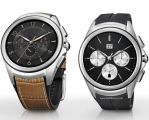
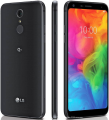
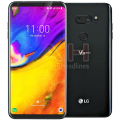
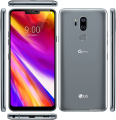

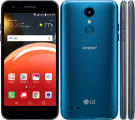
-16-GB.jpg)


-16-GB.jpg)
.jpg)











